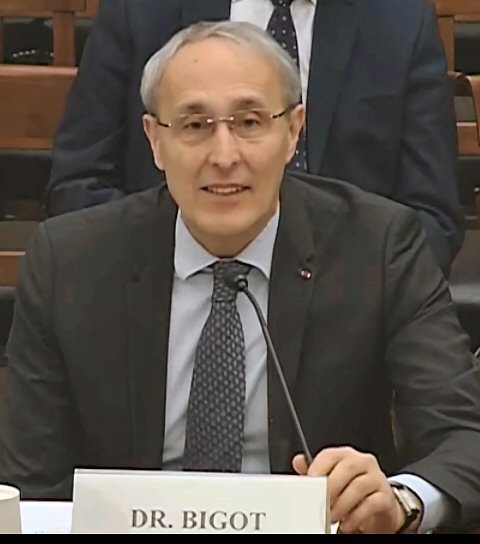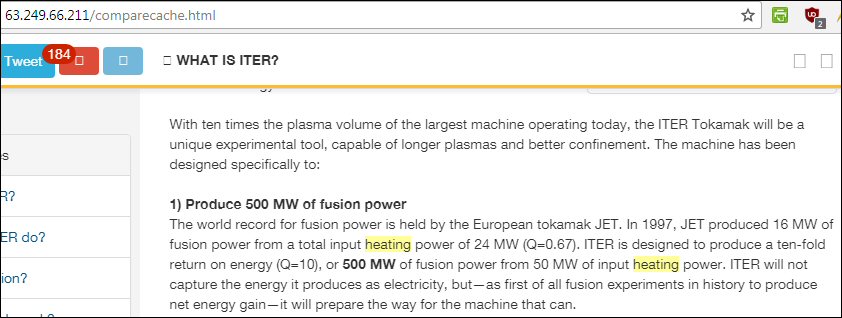19. ITER Organization Corrects More of Its False Fusion Claims
April 26, 2018
By Steven B. Krivit
Complete List of All Reports in This Series

Bernard Bigot, director-general of ITER, testifying before Congress
On March 28, 2018, within hours of the publication of the New Energy Times report of fusion experts’ testimony before Congress on the future of U.S. fusion energy research and ITER, the ITER organization corrected more of the false fusion claims on its Web site. Days earlier, Bernard Bigot, the director-general of ITER, had provided misleading information to Congress.
For more than 40 years, fusion experts have misled non-experts about the power results of the world’s largest experimental fusion research reactors.
The most powerful fusion result is the experiment that took place on Oct. 31, 1997, at the Joint European Torus (JET) reactor in the U.K. For many years, the ITER organization had said on its Web site that the JET reactor had produced 16 MW of output power from a “total input power of 24 MW.” This is false. JET required a total input power of at least 700 MW of electricity.
The ITER organization had claimed that the ITER reactor is designed to produce a ten-fold return on power, producing 500 MW of output thermal power from 50 MW of input power. This is false. ITER will require a minimum input of 300 MW of electricity.
On March 6, 2018, Bigot testified before the House Subcommittee on Energy during a hearing on the future of U.S. fusion energy research. Bigot provided members of Congress with misleading information about the JET reactor results and the claimed projected results of ITER. Days later, Congress passed the 2018 budget, which included funding for ITER.
The ITER organization corrected the false statements about JET and ITER, as shown in the screenshot below from the Change Detection Web site. The ITER organization also corrected the same falsehoods on its “Goals” page.

The ITER organization added the words “heating” to the statements about input power for both reactors. Although both statements are now true, they are still misleading. The ITER organization statement does not inform the public that JET required 700 MW of electrical power and ITER is designed to require 300 MW of electrical power.

